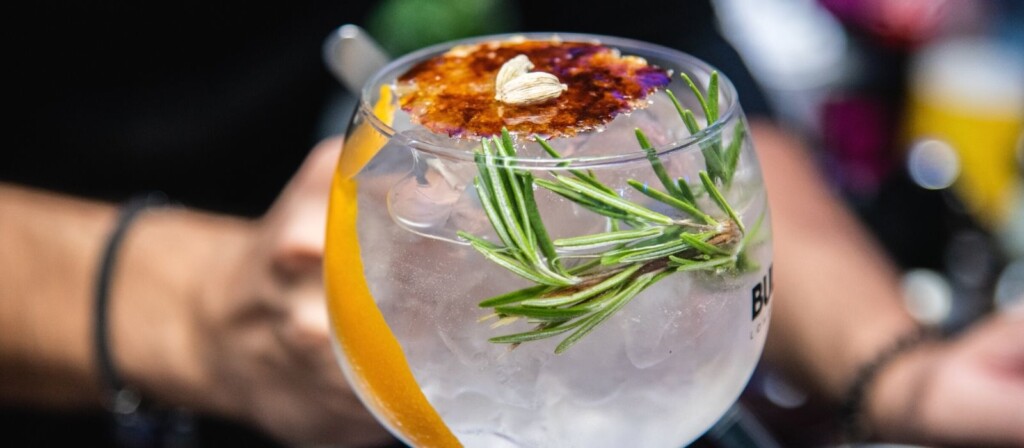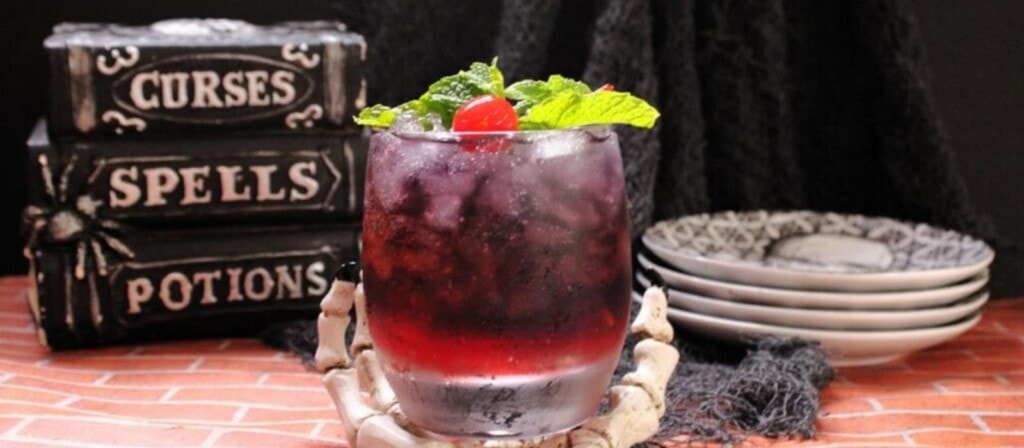Disclosure of Material Connection: Some of the links in the post above are "affiliate links." This means if you click on the link and purchase the item, I will receive an affiliate commission. Regardless, I only recommend products or services I use personally and believe will add value to my readers. I am disclosing this in accordance with the Federal Trade Commission's 16 CFR, Part 255: "Guides Concerning the Use of Endorsements and Testimonials in Advertising."
Sparkling wine. Don’t mind if I do. Just the thought of this brilliant figment and pure breed of a wine sends shivers down my spine. It is readily mouth watering. Luckily not one single person invented the sparkling wine or I’d be forced to kiss the very ground he or she used to walk upon….you heard me. I absolutely adore my bubbly! But I especially love certain champagne and food pairings that make this bubbly even more amazing.
Why I Love Champagne
Bubbles doesn’t just lift your spirit. They are happy, bouncy, thirst quenching, appetizing, elegant and fresh. Close to electric. And they come in numbers. The queen of sparkling wine, Champagne, to its many fans considered the optimal, celebratory and luxury starter drink is estimated to contain 49 million bubbles in one single bottle! A bottle of said champagne in my presens and I’m oozing of anticipation and aching for this the optimal treat to be served. Preferably well chilled, in a designer crystal glass, generously topped up. It is the sure thing at any kind of festivities.

Sparkling Wine
But we shouldn’t stop there. Absolutely not. As a matter of fact, wine in general is the perfect beverage to pair with food, and sparkling wine is no exception. Amongst all sparkling styles of wines, Champagne is king of the hill, and when it comes to the art of matching almost any kind of food when challenged. Sparkling wine and especially Champagne must actually be considered THE perfect beverage to accompany food, on top of its reputation as the optimal party starter. Here’s why!
Traditional Wines
Historically the traditional wines and local cuisine have adapted to one another for hundreds, sometimes thousands, of years. As much as I love Champagne it saddens me that many times it is not even reflected upon that this noble drink also can be paired very successfully with most food and cheese. With the possible exception of the black and blue steak, very sweet desserts or the too potent blue cheese, it is perfectly designed for this very purpose. And you can certainly find a sweeter demi-sec champagne if you want to extend the champagne bonanza all the way through dessert. And that is the whole truth, the frothy truth and nothing but the truth.

How Champagne is Made
Champagne is produced in a cool climate wine region, where coincidently, they produce a lot of milk and cream, and in extension some beautiful, mild, very creamy cheeses. Because of its long history side by side, the wine fits perfectly together with this kind of mild, delicate types of cheese. Also the farm animals meat, the goats, sheep and cows, is used in traditional, regional dishes that works surprisingly well with Champagne.
The very nature of Champagne make it a perfect match to various cheeses, snacks and many, many dishes. It has truly great properties. Lets take a look.
Champagne Screams Food Due to Acidity
Champagne has extremely high acidity due to the fact that the champagne region has a marginal climate. This in turn due to its northern placement within the wine growing zone. The grapes in short struggle to mature properly. A common joke amongst the producers in the region is that it is bloody lucky that they don`t produce still wine. The acidity works very well in the complex, sparkly champagne but in a still wine it would be brutal. This accentuated acidity demands, no screams, food. When presented with fat, and salt, the acidity in the champagne softens and instead the fruitiness moves forward.
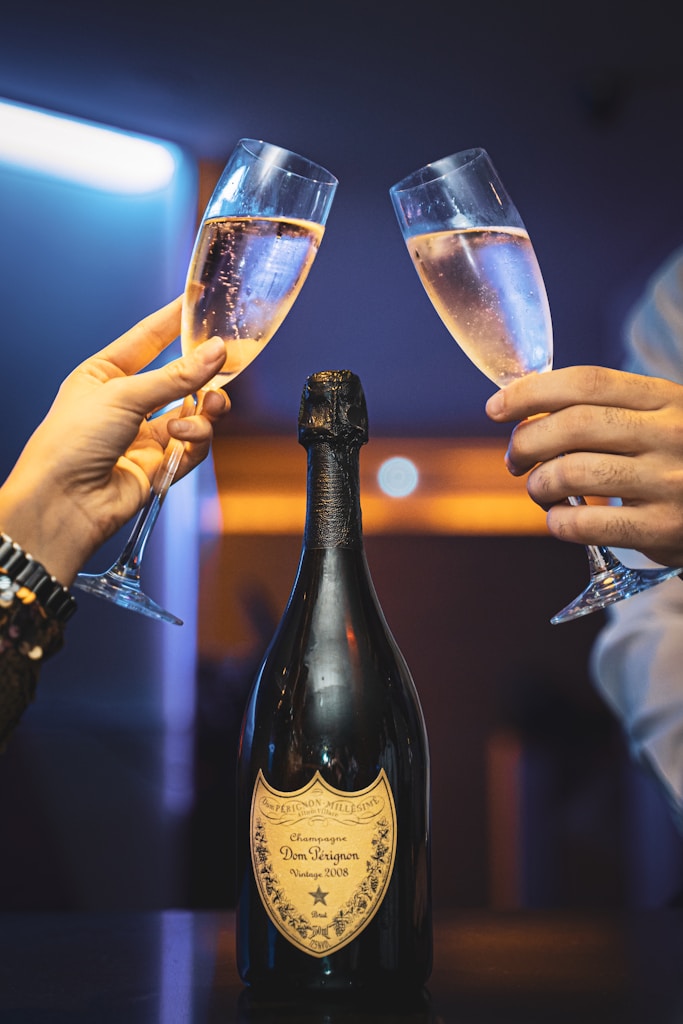
Champagnes Mineral Note Makes it Pair with Sea Food
Champagne also has a very cool chalky mineral note. This charming treat adds yet another dimension to the champagne. It derives from the soil, and the sense of place. In the wine we call this notion ”terroir”. The limestone and chalk that gives this character to the wine was left to us by sedimented, crushed, shellfish as the land rose millions and millions of years ago. The area used to be submerged under water as an inland sea. This prehistoric body of water is named the Paris basin as a geological region. The minerality in Champagne loves when it is served with companions from the sea.
Champagne and Food Pairings Galore
Due to tough legislation, actually THE toughest in the whole world of wine, the typical Champagne is incredibly concentrated and fruity. The focus is not ever on quantity, but quality, in this stellar appellation. Yields are regulated and controlled by law. Hence the grapes in the champagne region are of exceptional quality and small in numbers and size- meaning the grape must in turn is of very high quality. It is literally packed with flavor components. These are mainly found in the skin of the grape so the strive is always for the grower to produce small and few grapes when aiming high, quality wise. This is always the case in Champagne.
Champagne Matches Breaded Dishes
Champagne also has a renowned and quite wonderful toastiness that matches and mirrors any kind of breaded dish, croutons, or toast. The bready, yeasty notes derives from the aging on the lees, that is common practice in Champagne and is required by law. After the second fermentation in the bottle, the process that creates all the lovely bubbles, the champagne is stored with the dead yeast inside the bottle. It must do so for 12 months(plus 3 months in the bottle before released. So 15 months in total), but most champagne houses, cooperative and growers are very conscious and ambitious and age their precious gems much, much longer. The process preserves the wine but also gives the champagne character of yeast, freshly baked bread, toast, brioche, cracker or cookie. You name it.
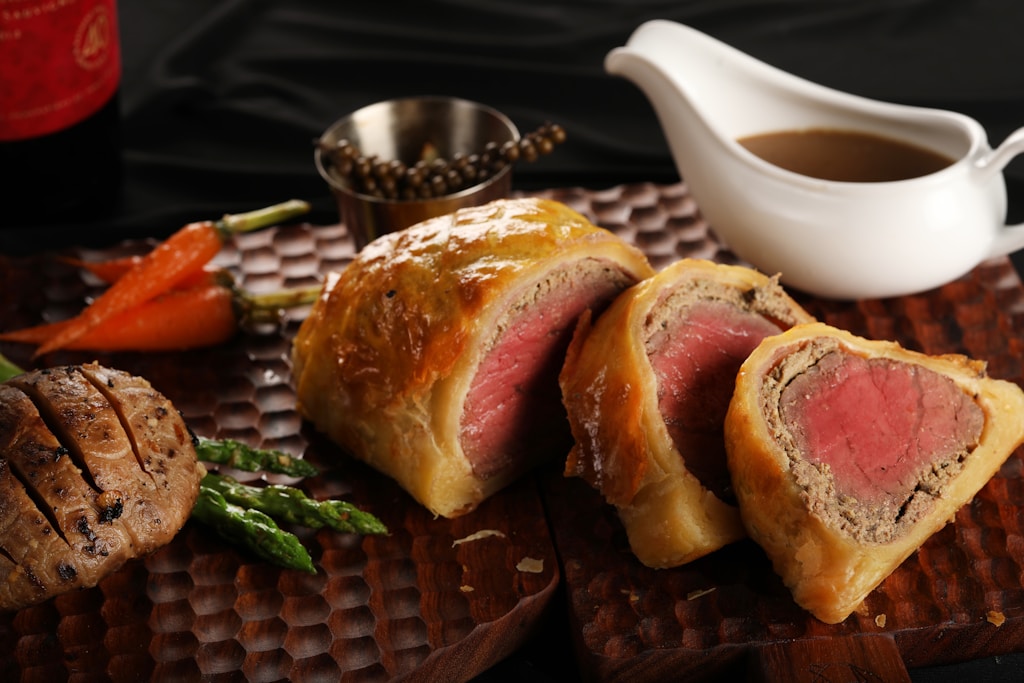
Furthermore, this is an exclusive product with great complexity and large flavor spectrum. Meaning there are many flavor components in the wine to reflect and match all kinds of ingredients on the plate. The aromas and flavors in champagne are so many that they quite easily covers a wide range of characteristics and it is not hard for the champagne to catch a fellow flavor note or two on the plate.
Yeasty Notes Make it Pair Well with Mushrooms and Cheese
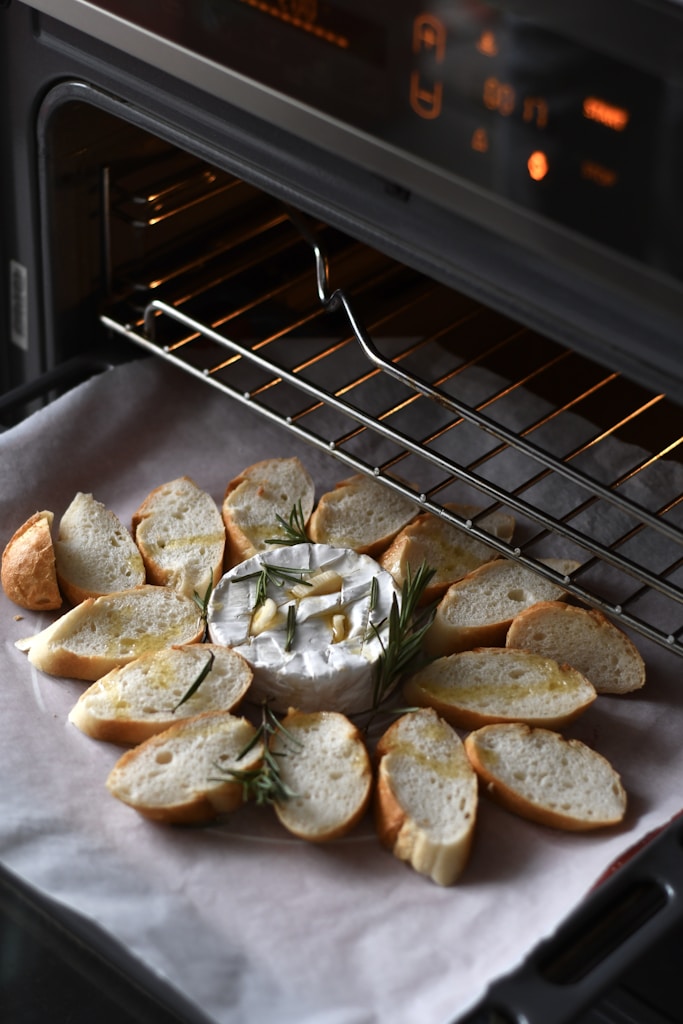
Another interesting angel when pairing champagne with food is that due to the lees-ageing, since yeast is a kind of fungi, mushrooms, white mold cheese(Brie, Chèvre ), mushroom soy sauce and so on are a natural and excellent companion to champagne. Fried mushrooms like shiitake, portobello mushrooms or chanterelles is magical with champagne. Regardless of the type of mushroom they all matches champagne so so very well. The fungi immediately finds the yeasty, toasty notes in the Champagne and they merge together for a more complete taste experience. As we all know it takes two to tango.
What to Consider When Choosing Your Meal
To consider when you choose your meal. It is lovely with a splash of lemon, lime or other kind of acidity on your plate to balance the extremely high acidity in the champagne. Any kind of mushroom flavor is grand. Fat and salt is always a plus and will round of the champagne and lift forward the juicy fruitiness. Frutti di mare, fruits of the sea, are mineral-driven ingredients and superb with Champagne. Avoid bitterness. Arugula, endive or raw onion need not apply- or dress generously in olive oil or creamy dressing. Anything breaded and fried or toasted is a great choice and will meet the toasted, yeasty notes in the champagne.
Dishes That Go Perfectly with Champagne
Below, you will find some of my favorite dishes that go perfectly with champagne. Here are my favorite Champagne and food pairings:
Seafood
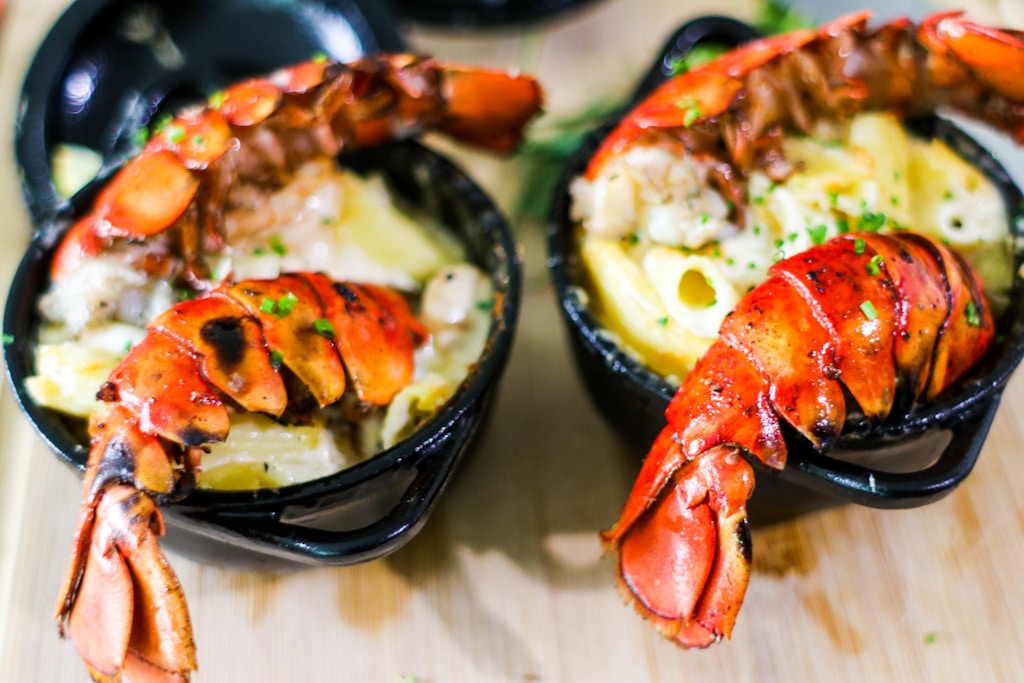
Oysters, lobster, langoustines, shrimp and mussels has notes of salt water, umami and minerals. They are always a sure thing with Champagne. Don’t be shy with the mayonnaise or aioli and it is always pleasant with some added acidity as well. Squeeze a few drops of fresh lemon over for example. Don’t hesitate to grill or cook your shellfish.
Halibut

Butter fried halibut, cod or grouper with sugar snaps, soy mayonnaise and oven roasted potatoes. Serve with lemon wedge.
Breaded Plaice
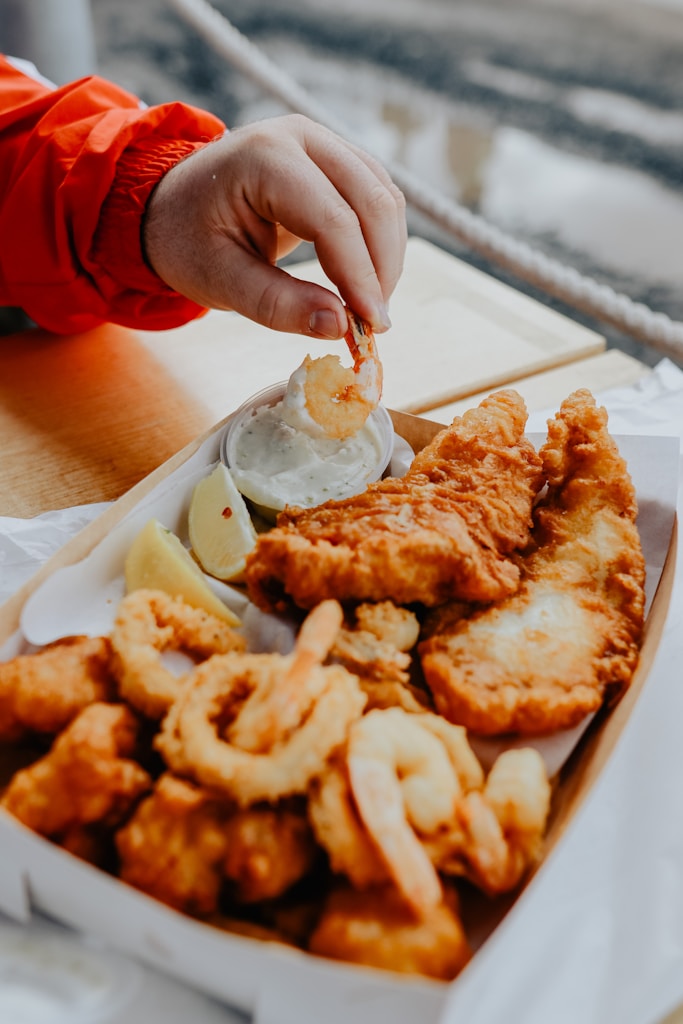
Breaded plaice or sole braised in butter and served with a stir fry of capers, tomatoes and soy beans served with rice or potato stomp.
Grilled Chicken
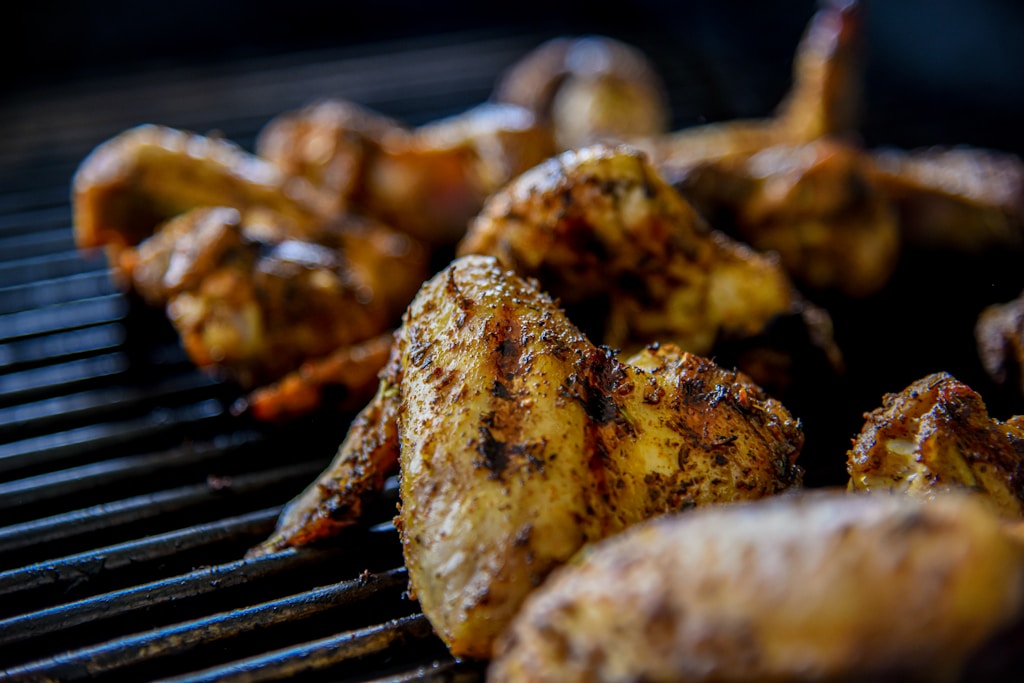
Grilled whole chicken with mushroom gravy, potato croquettes, carrots and peas.
Veal
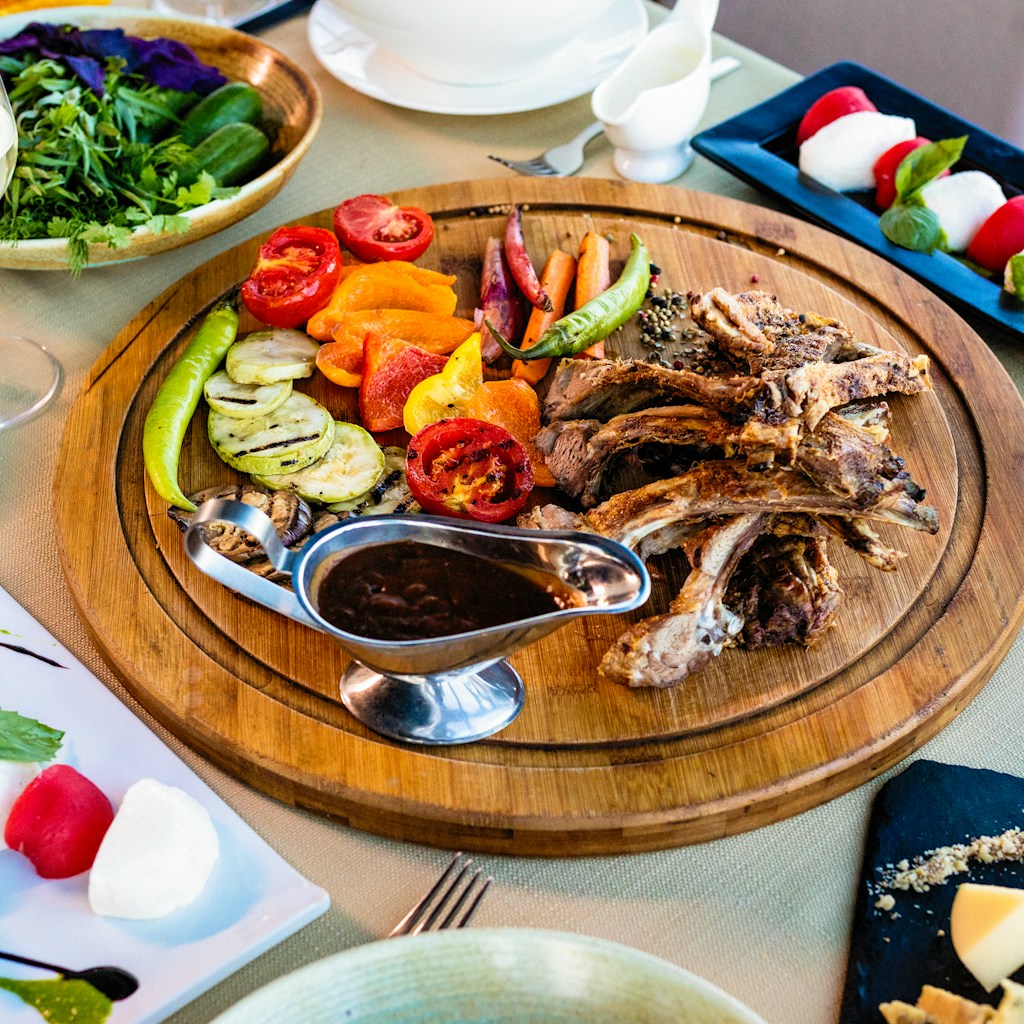
Vitello tonnato. Veal with cold sauce of tuna, sardines and capers.
If you liked this guide, check out some of our Champagne Cocktails to Enjoy Every Season!
Enjoy!



